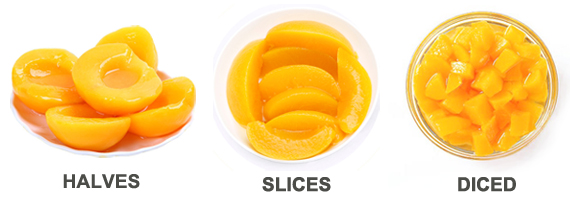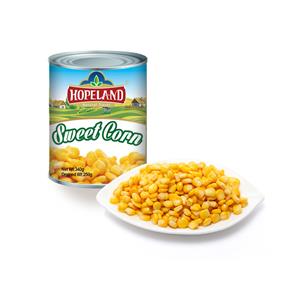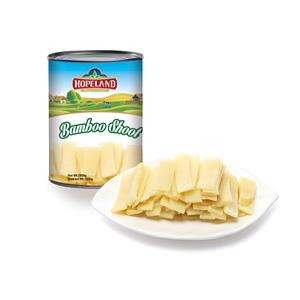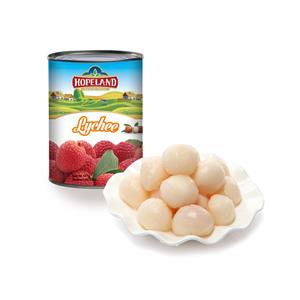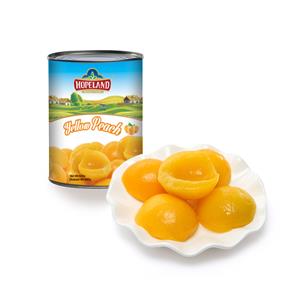How to Choose the Best Canned Peaches?
Canned peaches have long been a pantry staple across households around the world. Convenient, versatile, and delicious, they are a perfect alternative to fresh peaches when the fruit is out of season. Whether you're using them for baking, snacking, salads, or desserts, knowing how to select the best canned peaches ensures both taste and nutritional quality. In this comprehensive guide, we'll explore the different types of canned peaches, packaging options, nutritional aspects, common additives, and how to interpret labels—so you can confidently choose the best canned peaches for your needs.
1. Why Canned Peaches?
Before diving into how to choose the best canned peaches, let’s understand why canned peaches remain a popular choice:
Convenience: Available year-round and ready to eat straight out of the can.
Longevity: Extended shelf life makes them ideal for stocking up.
Versatility: Use in cobblers, smoothies, salads, sauces, or as a standalone snack.
Affordability: Generally more economical than fresh peaches, especially out of season.
Canned peaches allow people in all regions—regardless of local peach harvests—to enjoy the sweet, juicy goodness of this stone fruit throughout the year.
2. Types of Canned Peaches
Not all canned peaches are the same. Understanding the different styles and types helps you select the right one for your intended use.
A. Peach Varieties
Most canned peaches fall into two categories:
Clingstone: Flesh clings to the pit. These peaches are softer, sweeter, and ideal for canning due to their tenderness and rich flavor.
Freestone: Flesh separates easily from the pit. These are often firmer and used more for fresh eating, but can be found in canned form.
Clingstone peaches are more commonly found in canned products due to their better texture after processing.
B. Cut Styles
Canned peaches are typically available in the following forms:
Halves: Ideal for desserts or presentation-focused dishes.
Slices: Most common for baking and snacking.
Diced/Chunks: Convenient for fruit salads, yogurt, or smoothies.
Puree: Less common, but useful for sauces or baby food.
Choose the cut based on your recipe requirements. Slices are the most versatile and widely available.
3. Liquid Mediums: What Are Peaches Packed In?
One of the most important factors in choosing canned peaches is the type of liquid in which they are packed. This affects not only the taste but also the nutritional profile.
A. Heavy Syrup
Contains high sugar content (typically water, sugar, and sometimes corn syrup).
Peaches taste sweeter but are higher in calories.
Best for desserts or when you need extra sweetness.
B. Light Syrup
Lower in sugar than heavy syrup.
Provides sweetness without overwhelming the fruit’s natural flavor.
C. Juice-Packed (100% Fruit Juice)
Often packed in pear juice, white grape juice, or peach juice.
A healthier alternative to syrup.
Natural sweetness with no added refined sugars.
D. Water-Packed or No Sugar Added
Ideal for those watching sugar intake or looking for a more natural option.
Tastes less sweet but retains more of the fruit’s natural flavor.
Tip: If you're watching your sugar or calorie intake, opt for canned peaches packed in juice or water.
4. Check the Label: What to Look For
When scanning the can, the label can tell you a lot. Here’s what to focus on:
A. Ingredients List
A clean label with minimal ingredients (e.g., peaches, water, and fruit juice or sugar) is best. Avoid:
High-fructose corn syrup
Artificial sweeteners (e.g., aspartame)
Preservatives (like sodium benzoate or potassium sorbate)
B. Nutrition Facts
Look at:
Calories per serving
Sugar content (added vs. natural)
Vitamin C and A levels
Sodium content (some canned fruits include added salt)
Aim for lower sugar and sodium content unless your recipe calls for a sweet or preserved taste.
C. "No Added Sugar" or “Low Sugar” Claims
Be cautious. "No added sugar" doesn’t always mean sugar-free. Check if it's packed in fruit juice instead of syrup.
5. Packaging Options: Can, Jar, or Cup?
The traditional metal can is the most common form, but peaches also come in glass jars and plastic cups.
A. Metal Cans
Most economical.
Long shelf life.
BPA concerns: Look for BPA-free labels if you're concerned about chemical exposure.
B. Glass Jars
More visually appealing—lets you see the product.
Reusable and more eco-friendly.
Shorter shelf life once opened.
C. Plastic Cups
Convenient for lunchboxes or single servings.
Often more expensive per ounce.
May contain more additives.
Choose the packaging that suits your storage, portion, and environmental preferences.
6. Brands and Quality Grades
Canned peaches are graded by color, flavor, and texture. In the U.S., the USDA uses the following grading system:
Grade A (Fancy): Best color, shape, and firmness. Premium quality.
Grade B (Choice): Good color and flavor. Slightly softer texture.
Grade C (Standard): Softer, less vibrant. Suitable for cooking or baking.
While Grade A peaches are best for direct eating or elegant dishes, Grade B or C may work better in pies or cobblers where texture is less critical.
Brand Tip: Reputable brands often offer more consistent quality. Try a few and compare taste and texture.
7. Organic vs. Conventional
Organic canned peaches are grown without synthetic pesticides and fertilizers, and may also be processed with fewer preservatives.
Pros of Organic:
Fewer chemicals.
Sometimes better taste and texture.
Often no added sugar or minimal processing.
Cons:
Higher price.
Less availability.
If you’re concerned about pesticide residue or environmental impact, organic is worth considering.
8. Country of Origin
Not all canned peaches are created equal across regions. Some countries have higher food safety standards than others. Countries known for high-quality canned peaches include:
United States (especially California)
Greece
Spain
China (major global supplier, but quality varies)
Choose products that disclose country of origin and come from places with strong agricultural and food processing reputations.
9. How to Use Canned Peaches
Here are popular ways to enjoy your canned peaches:
Baking: Cobblers, pies, muffins, tarts.
Breakfast: Add to oatmeal, yogurt, or pancakes.
Drinks: Use syrup for cocktails or smoothies.
Savory Dishes: Combine with meats like pork or chicken for a sweet-salty contrast.
Salads: Pair with spinach, goat cheese, or nuts for a refreshing fruit salad.
Frozen Treats: Puree and freeze for homemade sorbet or popsicles.
Drain and rinse if using in savory dishes or if packed in syrup and you want to reduce sugar.
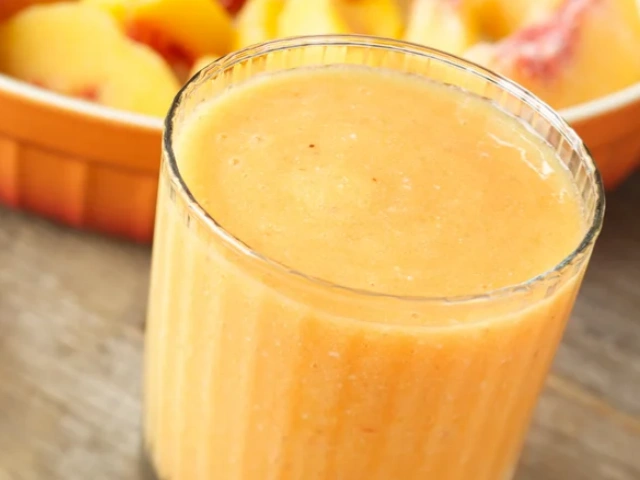
10. Storage Tips
Before Opening:
Store in a cool, dry place.
Avoid dented, bulging, or rusty cans—they may be contaminated.
After Opening:
Transfer leftovers to a glass or plastic container.
Refrigerate and consume within 3–4 days.
Do not store in the opened metal can to avoid a metallic taste.
If you're using only a portion, consider freezing the rest in an airtight container.
11. Sustainability and Ethical Considerations
Choosing canned peaches can also align with your values:
Fair Trade and Ethical Farming: Some brands support local farmers and fair labor.
Eco-Friendly Packaging: Recyclable cans or glass jars are preferable.
Food Waste Reduction: Buying canned fruit helps reduce waste from surplus harvests.
Check for labels like “Fair Trade Certified” or “Non-GMO Project Verified” if these issues matter to you.
12. Buying Tips and Best Practices
Compare prices by weight or volume, not just per can.
Check expiry dates, especially for bulk purchases.
Read customer reviews when shopping online.
Try store brands—many are sourced from the same producers as premium labels.
Use taste tests to determine personal preferences in sweetness, texture, and firmness.
Conclusion: Picking the Perfect Can
Choosing the best canned peaches involves more than just grabbing the first can off the shelf. It requires understanding your needs—whether they’re health-conscious, culinary, or budgetary. By paying attention to the variety, cut style, packing liquid, and label information, you can make informed choices that suit your taste and purpose.
Whether you're baking a juicy cobbler, topping a bowl of yogurt, or stocking your pantry for emergencies, the right canned peach can elevate your meal from average to amazing. With this guide, you’re now equipped to select high-quality, delicious canned peaches that you’ll feel good about serving and eating.

